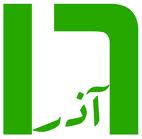Today's Iran Non-Story: Some Guy Who Looked Like Ahmadinejad Protested in 1984
 Sunday, November 29, 2009 at 11:36
Sunday, November 29, 2009 at 11:36  Sometimes a media "exclusive" is beyond parody. This from The Mail on Sunday in Britain:
Sometimes a media "exclusive" is beyond parody. This from The Mail on Sunday in Britain:Did Iran's president take part in a demo during a brutal afternoon in London (or was it a man who looked exactly like him?)
By JASON LEWIS
The features are unmistakable, the fervour irrepressible as President Mahmoud Ahmadinejad turns against a crowd of opponents.
Iran: How a Non-Story about a Non-Jew Became Media Non-Sense
The Latest from Iran (29 November): Larijani Making A Move?
But despite the uncanny likeness, officially this is not the President of Iran who oversaw the bloody suppression of his country’s democracy movement.
This picture was taken in London in 1984 and raises puzzling queries over Mr Ahmadinejad, 53.
Much of his rise to Iran’s presidency is shrouded in the secrecy which surrounds what has gone on in the pariah state since the Iranian Revolution in 1979 swept the late Ayatollah Khomeini to power.
Now this photograph, unearthed by The Mail on Sunday, suggests a young Mr Ahmadinejad spent time in London and took part in a notorious incident which demonstrated his and the Iranian regime’s repressive and sometimes violent nature.
The picture, first published by the Daily Mail on April 27, 1984, shows a smart-suited man on the balcony of the Iranian consulate in Kensington, his fist raised in a menacing salute as he harangues anti-Khomeini demonstrators in the street below.
The man, who reports described as a diplomat, had stepped on to the balcony hours after protesters opposed to the Islamic regime stormed the building as part of synchronised worldwide action.
As demonstrators burst in chanting anti-Khomeini slogans, consulate staff, including members of the notorious Republican Guard, locked them in the reception room.
According to reports at the time, and witnesses who spoke to The Mail on Sunday last week, the Iranian staff then returned in numbers, armed with wooden and iron clubs. Inside, the 11 unarmed protesters were taken prisoner.
Some reports suggested they were tortured to discover the names of relatives and friends still living in Iran.
The late investigative reporter Paul Foot said: "The protesters were bound, interrogated and beaten. Two were beaten unconscious. One recovered but could not lift his head because it was stuck to the carpet in congealed blood." He said the beating went on for seven hours. Then at 6pm, a diplomat, and it is unclear if this was Mr Ahmadinejad, appeared on the balcony and announced that the protesters had been "dealt with".
The demonstrators were then thrown out of the building with placards hung around their necks accusing them of being terrorists in the pay of the US and France. No one from the consulate faced charges.
Last week the Foreign Office said it had no record of Mr Ahmadinejad being at the Iranian consulate in the Eighties. The Diplomatic List for 1984 contains no reference to the name Ahmadinejad, which he adopted after his family moved to Tehran when he was a boy, or to his real name Mahmoud Saborjhian. Yesterday the Iranian Embassy added that it "didn’t think it was right" that he had ever been based in London.
Two people who took part in the protest, who spoke to The Mail on Sunday last week, also said they had no recollection of him that day.
Mr Ahmadinejad was also alleged to have taken part in the beating of American diplomats at its embassy in Tehran after it was taken over by students in 1979.
A photograph purportedly showed Mr Ahmadinejad escorting a blindfolded US hostage.
But the Iranians produced a picture of the President as a young man which appeared to look little like the hostage-taker.
We passed the picture to photo-analysis firm OmniPerception, who regularly aid police. It said: "A database of several thousand people was complemented with four recent images of the President. A comparison using the 1984 image was made. The result indicated the four pictures to be the most likely match of all subjects in the database. If this was a police inquiry, this would give cause for further investigation."

 The most interesting news last night was low-key but noticeable. In early evening details of the routes for the protests of 16 Azar (7 December) spread across Twitter. There were references to new student movements organised in recent days.
The most interesting news last night was low-key but noticeable. In early evening details of the routes for the protests of 16 Azar (7 December) spread across Twitter. There were references to new student movements organised in recent days. 1945 GMT: Reports that today's gathering of mothers of political prisoners, held every Saturday in Laleh Park in Tehran, was attacked by security forces with tear gas. Despite the assault, 150 people participated.
1945 GMT: Reports that today's gathering of mothers of political prisoners, held every Saturday in Laleh Park in Tehran, was attacked by security forces with tear gas. Despite the assault, 150 people participated. UPDATE 1110 GMT: Cole also has posted
UPDATE 1110 GMT: Cole also has posted